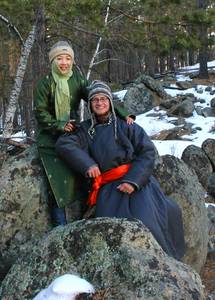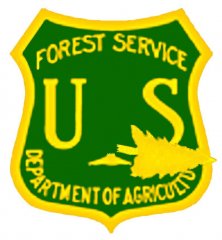-
Posts
1441 -
Joined
-
Last visited
Content Type
Profiles
Forums
Events
Posts posted by Toast
-
-
Two words, Second Ascent.
-
If you traverse way left (climbers right) of Bob's Wall and descend you'll come across a bolted slabby thing. Anybody know what that's called? It's small but fun.
-
You can ice crag on the Nisqually serracs. You'll pass right by them on your way to camp hazard.
-
You're on. Check you're PM's.
-
How about some alternatives? I have a week to burn and am in bad need of a road trip


-
So SUCK

-
Phuck, now where to? I was gonna take off tomorrow.

-
I just got unm'ployd and am heading down there. Maybe I'll bump into you two there

Hi Carolyn

-
The LaSportiva Glacier is a great boot for general purpose mountaineering. It climbs rock well, is warm enough for 3 seasons in the Cascades, is stiff enough to kick steps in hard snow. Unfortunately, it won't take the front bail of a step in crampon, but REI has a deal on the Grivel AirTech crampon which is an ideal fit for this boot.
-
If the art of pub clubbing were not dead, I'd say I'd meet ya there...
Like WTF happened to Pub Club? I tune out a couple weeks and all hell breaks loose

-
I have a bag of charcoal I can bring. It'll be enough for one grill but not much more.
-
Holy shit! How many of your nine lives do you have left? Glad you guys are okay.
-
I haven't seen Return to Sender, but I have seen Parallelojams which makes up the bulk of the film. It's worthy


-
Looks like a strangler in a previous life

-
Name your favorite routes under 5.9 in the Bugaboos.
thanks in advance

-
**** snip snip ****
MIDNIGHT AND NOONTIME ROCKS AND VICINITY CLOSED TO ENTRY APRIL 1 TO JULY 31 To Protect Nesting Raptors.
Attention Climbers
Raptors have been observed on and between Midnight and Noontime Rocks. To protect these birds during the nesting period these rocks and the area immediately above and between them is closed to all entry. During the nesting period, the site will be monitored and if conditions warrant, some restrictions may be lifted.
Climbers are not the only creatures drawn to Leavenworth's rock faces. The walls are also crucial breeding areas for birds of prey. They are sensitive to human disturbance during their nesting and roosting cycle. People who stray too close to a nest can scare off parent birds or elicit an attack. Even if the nest is not abandoned, disturbance can cause nest failure. Eggs need to be constantly incubated so they do not become too hot or cold. Newly hatched raptors can not regulate their own body temperature and frightened juvenile birds may attempt to fly before they are ready. It is critical that everyone abides by posted seasonal closures in order to protect the birds.
Thank you! Okanogan-Wenatchee National Forests, Wenatchee River Ranger District, Leavenworth Ranger Station (509)548-6977
-
werd, sent

Nice

-
Last Sunday a few of us got together at a friend’s hay barn in Snohomish to practice some climber self rescue. I don’t think it’s any secret that CBS and I are Everett Mountaineers. At the committee level we’ve been talking about putting together a self rescue course for some time. We’re now workign through scenarios building a base of knowledge from which to teach. Among us were members of Everett Mountain Rescue and some of our more seasoned climbers. We were armed with David Fasulo’s book, Self Rescue, and nothing more than what we would actually carry on an alpine rock climb. For me, this was comprised of the following. While this may seem like a lot, I used every single piece as well as most of my partner’s gear.
2 HMS locking biners
1 ATC
5 locking biners
4 Doval biners
1 cordalette
2 sewn double runners
1 single runner
2 hero loops of 6mm perlon
1 daisy chain as a personal anchor
This was actually our second convening. Previously we had practiced rescuing a second, descent via counter weighted rappel and passing a knot on rappel. Also, as part of teaching the Everett Basic climbing course we were all versed in the fundamentals of emergency tie off and escaping the belay. None of that was a match for the complexity of rescuing a fallen leader who was more than half a rope length out. That was the scenario this time around. In short, this covers escaping the belay, ascending to the fallen leader, securing them to an anchor, descending to release the belay anchor tie off, re-ascending to the new anchor, set up for a rappel and descent (both assisted rappel and counter weight rappel variations,) and likely a second or more rappel if this were for real. Knots used included a variety of friction knots (prusik, klemheist, autobloc,) and a variety of releasable hitches (mule knot, munter mule, mariner knot.)
Most of the things that seemed excessive at first glance of Fasulo’s descriptions are actually well advised. While I initially thought this was a modestly complex affair that I could wing on the fly, I was truly humbled by how many times I trapped myself. In a real situation, that would involve reascending to clear the fat boy, and possibly having to rig a haul to relase tension on the system. Also, this seemed to take forever, almost an hour per scenario, and we were only ascending maybe 30’. Think if this were a real climb and the leader fell 100’ above you. That’s a hundred feet up, a hundred feet down, a hundred feet up… I think you get the picture. I never want to have to do this for real, but I’m glad I’ve run through this scenario, and I plan to do this a few more times till I am versed in the systems.
-
We followed some old tracks and realized they were going in the wrong direction when they dropped into a steep gully. We moved left toward the NE side of Lane, dropped into a different gully that is typically full of snow, crossed that and kept moving down and left until we hit our approach tracks. There was a lot more bushwacking than usual with the low snow.
Mike
We went the other direction. We veered right, pranced around cliffy terrain and found a reasonable gully to descend after burrowing through some BW3. I thought it was us, but it sounds like you guys had a similar experience (fun
 )
) -
Hey Mike,
Nice job! We were the party of thee that went up the Fly and met you at the top. We got a litte off route coming down, but Klenke woulda been right at home

-
Yea, I know they're beat to shit, but I like 'em. Besides, there're so many mamories... like this one.
Hey Klenke

-
Here Tina, EAT!
-
 good one
good one 


-
Rock on Fern




rust remover
in Newbies
Posted
Steel wool and elbow grease